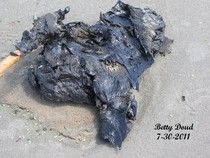The Texas power grid operator has scrambled this week to meet soaring electricity demand in the face of a brutal heat wave, and residents of the second most populous U.S. state are one power plant shut-down away from rolling blackouts.
Power demand for Electric Reliability Council of Texas, Inc, or ERCOT, which runs the power grid for most of the state, hit three consecutive records this week as Texans cranked up air conditioners to escape one of the hottest summers on record.
The grid operator on Thursday cut power to some big industrial users, and businesses and households face a repeat of the rolling blackouts they faced in February, when a bitter cold snap interrupted power supplies.
Though ERCOT has done a good job balancing supply and demand, "You always have to expect the unexpected can happen," said Arshad Mansoor, senior vice president at the Electric Power Research Institute (EPRI). "A unit can shut. The wind may not blow."
It's been a year of extreme weather for the Lone Star State, already suffering from the worst drought on record.

